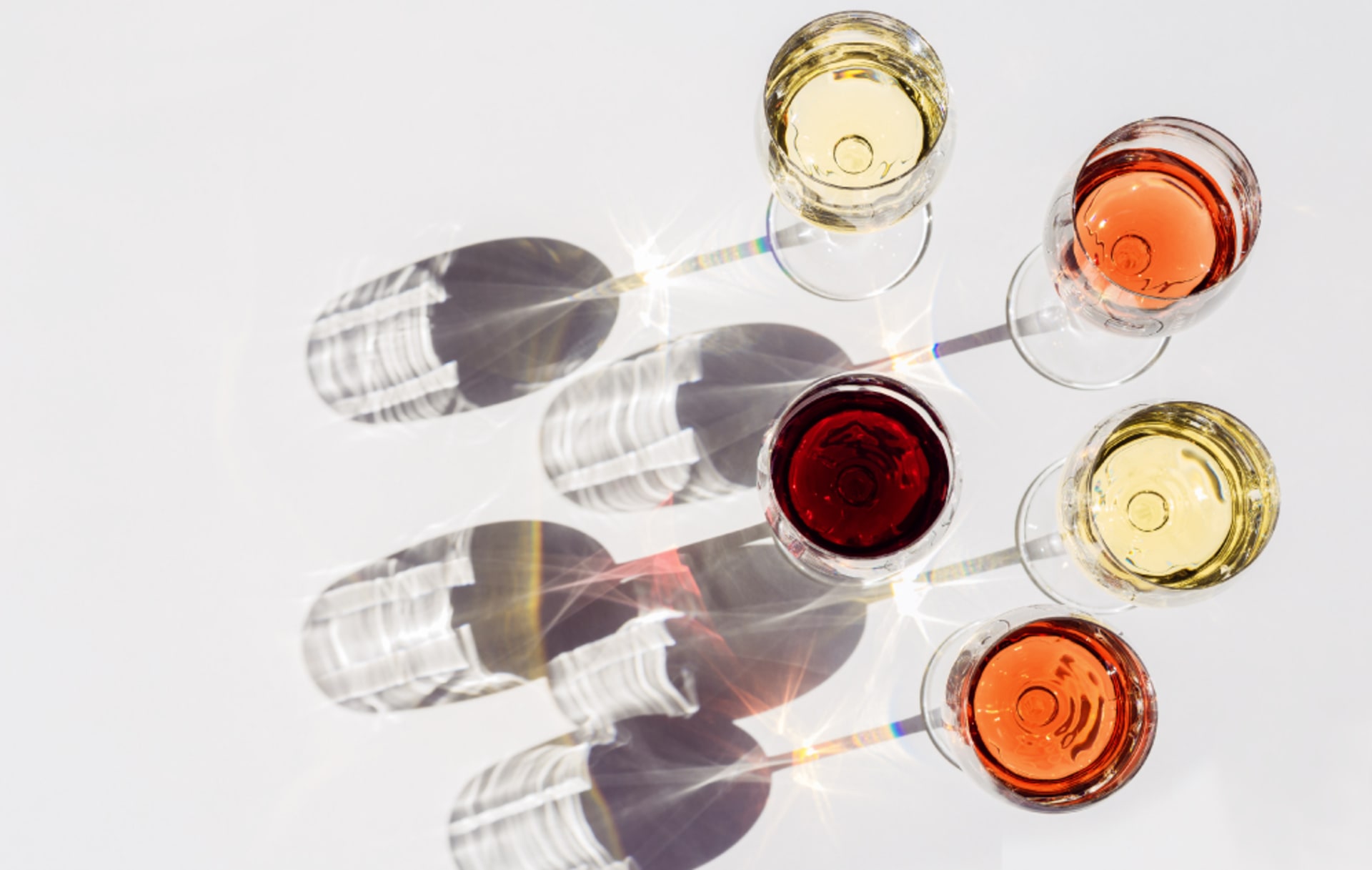Wine colours
Red, white, rosé – wine colours, contrary to what most people believe, are not influenced by the colour of the grape. This is determined by the vinification technique used.
Generally, the grape’s pulp is colourless – only the skin contains any coloured pigments, anthocyanins for example, which give colour to the berry and subsequently to the wine. Actually, there are ‘colouring’ varieties, whose pulp is more or less intensely coloured, not only in the more peripheral layers next to the skin but throughout its entire thickness, which is known to release very intense colours. Specifically, what really makes the difference in the colour of the wine is the maceration, which is completely absent in white wine vinification. It takes a few hours to produce a rosé wine, while it takes several weeks to produce red wine.
Wine colour – what does it depend on?
Grape skin can contain a variety of colouring substances–
- anthocyanins, plant pigments in red grapes;
- flavones, which give colour to white and yellow grapes;
- leucoanthocyanins and catechins, the oxidation of which is responsible for the darker tones in white grapes.
During vinification, these substances are released. A wine can thus become white, rosé or red. Specifically, the steps that determine wine colour are maceration and fermentation, but there are other elements that may have an influence (although to a lesser degree).
The number of pump-overs, the quantity of sulphur dioxide and the type of wooden containers used in ageing play a marginal role in the colouring of the wine.
Lastly, location and grape variety also play a role in the process. Soil type, exposure, climate, latitude and altitude all contribute to the creation of pigments in grapes. There are varieties that produce grapes that are more colourful and intense, or clear and bright. It is primarily the vinification process that is the decisive factor.
The colour of red wine
Red wines can be:
- purple-red, young, with hardness prevailing over softness;
- ruby-red, a good balance between hardness and softness;
- garnet-red, rather mature, with a slight prevalence of softness over hardness;
- orange-red, with extended ageing and a definitive prevalence of softness.
The colour of white wine
White wines, the colour of which tends more towards yellow, can be:
- greenish-yellow, very young and light, acidic and obtained from grapes harvested early on;
- straw-yellow, young and soft, obtained from ripe grapes;
- golden-yellow, rather ripe and often briefly macerated or kept in wooden barrels;
- amber-yellow, fortified and lacking acidity.
The colour of rosé wine
The colour of rosé wine is due to the fact that maceration is much more contained than it is for red wine. In order to obtain a rosé colour, the must is macerated for between two hours and two days, so that smaller quantities of tannin are released from the solid parts of the raceme.
Although there are several methods for producing rosé wine, the most common involves harvesting red grapes early. After pressing, the skins and pips are left to macerate in the juice for a short time. The must is then separated from the solid part and traditional white wine vinification is carried out.
An alternative technique for producing rosé wine is called the “salasso” or “bleeding” technique. During red wine vinification, 20-30% of the must is drawn off, interrupting maceration. The drawn-ff must undergoes white wine vinification. The technique, in just one step, makes it possible to obtain fresh, fragrant rosé wines and intensely coloured red wines (since the starting must, which has deprived of a certain mass, is more concentrated).
Rosé wine can be:
- soft pink, due to very short maceration times;
- cherry pink, the most common type;
- claret pink, the most intense shade.


 China
China
 United Kingdom
United Kingdom





